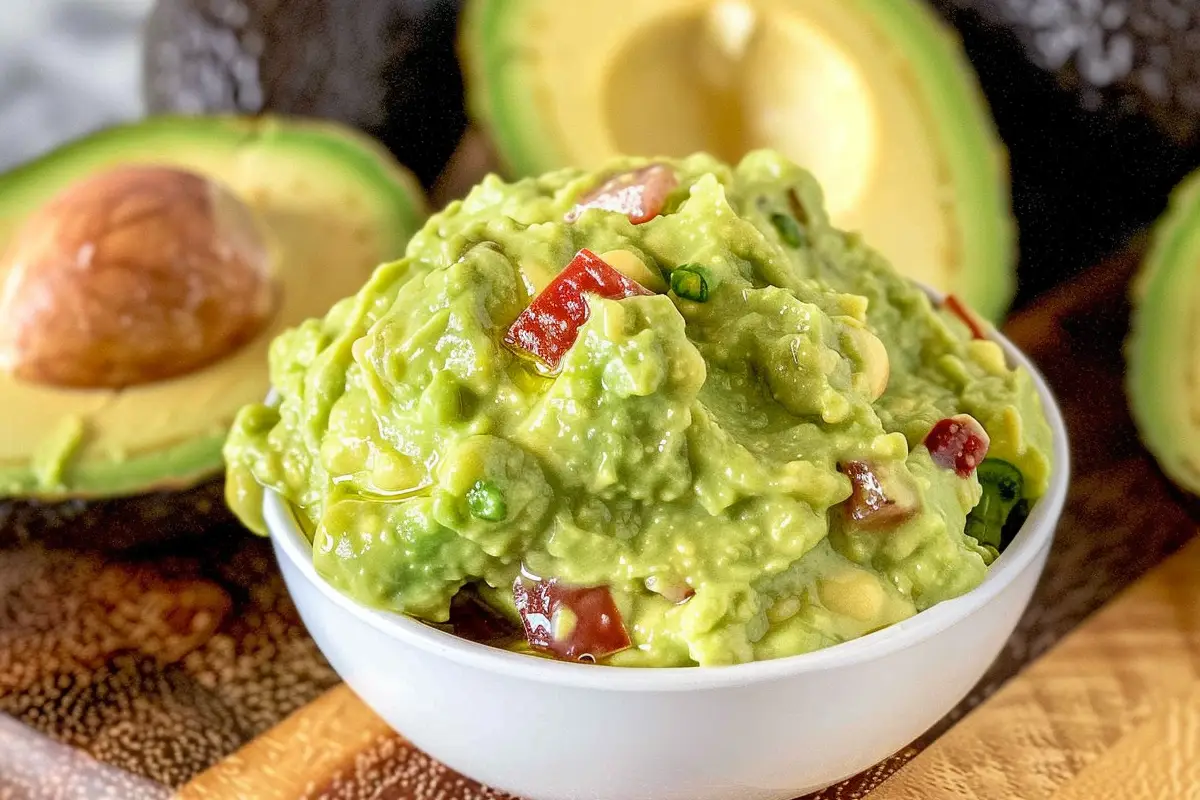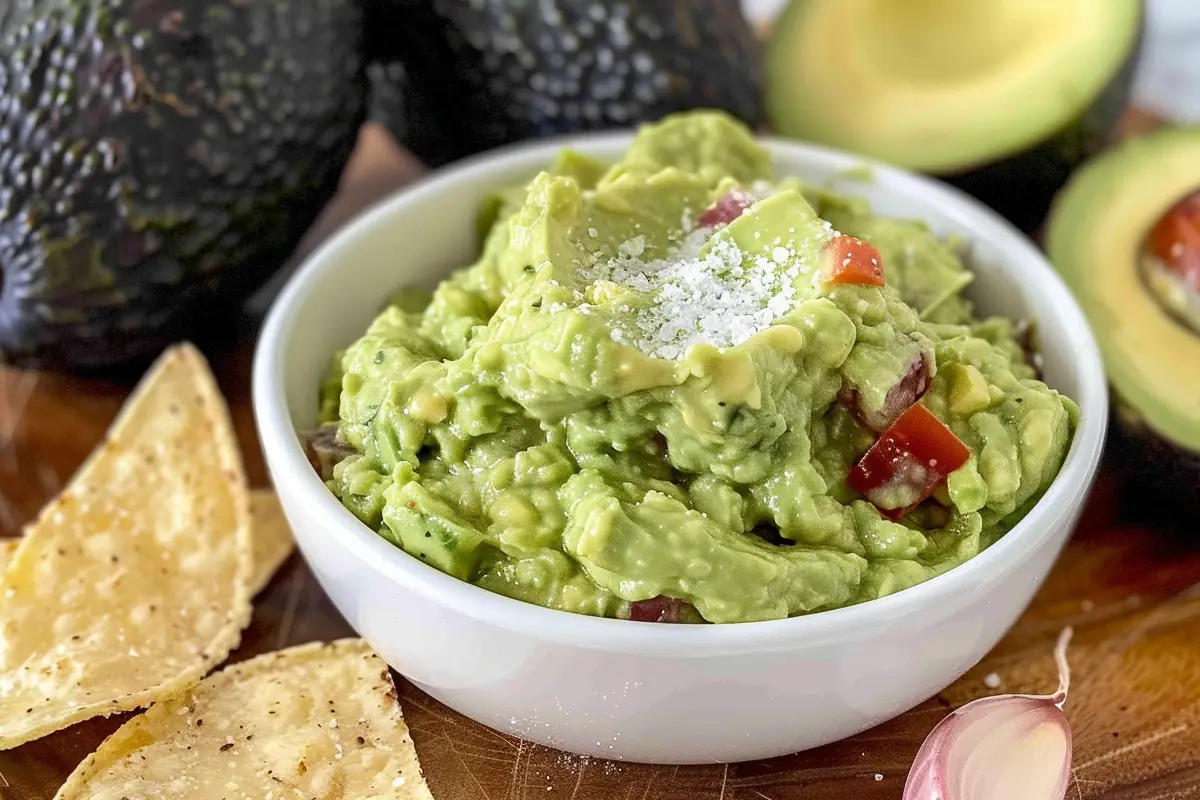Introduction to The Difference Between Mexican and American Guacamole?
Guacamole is beloved worldwide for its creamy texture, fresh flavors, and versatility. Despite its universal appeal, there are significant differences between traditional Mexican guacamole and its American counterpart. These variations go beyond ingredients and preparation styles—they reflect different approaches to culinary tradition and cultural identities. In this article, we’ll explore these distinctions, covering everything from ingredients and preparation techniques to serving styles, nutritional profiles, and cultural significance.
A Brief History of Guacamole
The history of guacamole dates back to the early 16th century, during the reign of the Aztec empire. The dish, originally known as “āhuacamolli,” combined mashed avocados, tomatoes, and chilies, reflecting the abundance of fresh produce in the region. The name “āhuacamolli” itself comes from the Nahuatl words for “avocado” and “sauce,” indicating that avocados were the star ingredient even in its earliest form.
Guacamole became a staple in Mexican cuisine due to its simplicity, fresh taste, and nutritional benefits. It was traditionally prepared using a molcajete—a type of mortar and pestle made from volcanic stone—giving it a distinct chunky texture. Over time, as Mexican cuisine spread to other parts of the world, guacamole gained popularity, especially in the United States, where it took on new ingredients and a different identity.
Key Ingredients: Simple vs. Complex

One of the most significant differences between Mexican guacamole and American guacamole is the ingredient list. Traditional Mexican guacamole stays true to the idea that less is more, using just a few fresh components to highlight the avocado’s natural flavor. These include:
- Avocados: The foundation of guacamole. The preferred variety is Hass, known for its creamy texture and rich taste.
- Lime juice: Adds brightness and a touch of acidity, which enhances the flavor and helps prevent browning.
- Chopped white onions: Milder and less overpowering than other onion varieties.
- Cilantro: Adds a fresh, herbal note that complements the avocado’s creaminess.
- Salt: A simple yet essential ingredient to bring out the natural flavors.
- Optional: Jalapeños or serrano peppers for heat and complexity.
The goal of Mexican guacamole is to maintain the avocado’s buttery texture and nutty flavor while adding just enough acidity, spice, and herbal notes to make it pop. This minimalist approach ensures that the avocado remains the star of the show.
The American Take on Guacamole
By contrast, American guacamole often includes a wider range of ingredients. It’s not unusual to find versions with diced tomatoes, garlic, and even sour cream or Greek yogurt. These additions create a richer, more varied flavor profile that ranges from tangy and creamy to spicy and savory. Common ingredients in American guacamole include:
- Diced tomatoes: Adds sweetness, color, and juiciness.
- Garlic: Introduces a pungent, savory depth.
- Sour cream or Greek yogurt: Used to achieve a creamier, smoother texture.
- Bell peppers: Contributes crunch and sweetness.
- Spices: Cumin, chili powder, or cayenne for added complexity.
- Additional herbs: Parsley or basil may be used instead of cilantro for those who dislike its strong flavor.
The result is a dip that is less focused on highlighting the natural taste of avocados and more about creating a complex, layered flavor. The texture can also vary significantly—from chunky to smooth, depending on whether the avocados are hand-mashed or pureed in a food processor.
How Preparation Affects Texture
The preparation techniques used for Mexican and American guacamole differ significantly and play a crucial role in defining each version’s texture. In Mexico, guacamole is often made using a molcajete, which allows for a gentle, controlled mashing of the ingredients. This results in a texture that’s chunky and rustic, with visible pieces of avocado and finely crushed onions and herbs.
In contrast, American guacamole is frequently made with a blender or food processor, which creates a much smoother consistency. This method allows for easier incorporation of ingredients like sour cream or yogurt, making the dip more spreadable and creamy. While this texture works well for dipping chips, spreading on sandwiches, or using as a topping for burgers, it can lack the complexity of traditional Mexican guacamole.
Tips for Achieving the Perfect Texture at Home
- For chunky Mexican-style guacamole, use a fork or a mortar and pestle to gently mash the avocados, leaving some small chunks intact.
- For smooth American-style guacamole, blend the avocados with your choice of add-ins like sour cream or Greek yogurt until it reaches a silky consistency.
Flavor Profiles: Simple and Fresh vs. Bold and Complex
- Mexican guacamole: The flavor is simple, bright, and fresh. Lime juice adds a hint of acidity, while the onions and cilantro provide subtle notes of spice and herbaceousness. If jalapeños or serrano peppers are added, they bring a mild heat without overpowering the avocado’s natural creaminess.
- American guacamole: The flavors are richer and more varied. The addition of garlic, tomatoes, and spices creates a dip that is tangy, sweet, savory, and sometimes smoky. Depending on the seasonings used, American guacamole can range from mildly sweet to intensely spicy, making it a versatile dip that pairs well with a variety of snacks and dishes.
Serving Styles: Toppings and Sides vs. Party Dip
Mexican guacamole is an essential part of the country’s culinary landscape. It’s rarely served as just a dip but rather as an accompaniment to a wide range of traditional dishes. It’s commonly used as a topping for tacos, tostadas, sopes, and quesadillas. You’ll also find it as a side for grilled meats like carne asada or as a zesty condiment for ceviche.
In the United States, guacamole is primarily seen as a party dip. It’s often served with tortilla chips as part of a trio with salsa and queso. Its popularity as a party food has also made it a staple at game-day events like the Super Bowl. American guacamole is also used as a spread for wraps, sandwiches, or as a creamy topping for burgers and bagels.
Health Benefits and Nutritional Differences
Both Mexican and American guacamole offer significant health benefits, primarily due to their shared base ingredient: avocados. Avocados are rich in monounsaturated fats, fiber, vitamins C, E, and K, and potassium. They’re known for their heart-healthy properties and ability to help lower cholesterol levels.
Mexican Guacamole: A Healthier Option
Because traditional Mexican guacamole uses minimal ingredients, it is typically lower in calories and saturated fats compared to its American counterpart. With just avocados, lime, onions, cilantro, and salt. Mexican guacamole provides a boost of healthy fats and nutrients without unnecessary additives.
American Guacamole: Tasty but Higher in Calories
The addition of sour cream, cheese, or mayonnaise can significantly increase the calorie and fat content of American guacamole. While still nutritious, these add-ins make the dip richer and more indulgent. Which is great for special occasions but may not be the best choice if you’re looking for a lighter, everyday snack.
Regional Variations in Mexico and the United States
In Mexico, guacamole varies significantly depending on the region:
- Guacamole Norteño: Found in Northern Mexico, this version is heartier and often includes pico de gallo (a mixture of chopped tomatoes, onions, and cilantro).
- Guacamole con Frutas: This variation includes tropical fruits like mango or pineapple, adding a sweet and tangy twist.
- Guacamole Verde: Made with a base of avocados and tomatillos, which gives it a bright, tangy flavor and a vibrant green color.
In the United States, regional adaptations often depend on local ingredients and culinary trends:
- California Guacamole: Known for incorporating ingredients like artichoke hearts, sun-dried tomatoes, or roasted garlic.
- Southwestern Guacamole: Often includes corn, black beans, and spicy peppers for a heartier, more robust dip.
- Tex-Mex Guacamole: Combines guacamole with queso or adds ground beef for a richer, more indulgent variation.
Choosing the Right Guacamole for You: Mexican Guacamole and American
Choosing between Mexican guacamole and American guacamole ultimately comes down to your personal preferences and the dish you’re serving. Here’s a quick guide to help you decide:
- For tacos, grilled meats, and traditional Mexican dishes: Go with authentic Mexican guacamole to keep the flavors balanced and fresh.
- For chips, burgers, or as a versatile dip for parties: Choose American guacamole if you’re looking for something richer and creamier.
Final Thoughts: The Difference Between Mexican Guacamole and American

The differences between Mexican guacamole and American guacamole are more than just variations in ingredients—they represent unique culinary identities shaped by tradition and innovation. Mexican guacamole stays true to its roots, focusing on simplicity and letting the avocado’s natural flavor shine through. With just a few fresh ingredients like lime, cilantro, and a hint of heat from chilies. It’s perfect for those who appreciate the vibrant, earthy flavors of authentic Mexican cuisine. Its chunky texture and fresh taste make it an excellent topping for tacos, grilled meats, or as a dip for totopos, highlighting the essence of Mexican culinary tradition. This version is ideal when you want a dish that complements rather than competes with other flavors, adding a burst of freshness to your meal without overwhelming the palate.
On the other hand, American guacamole embraces creativity and experimentation, resulting in a richer, more indulgent dip. With additions like tomatoes, garlic, sour cream, and spices. It takes on a bolder flavor profile that stands out on its own. This style is smooth, creamy, and perfect for spreading on sandwiches, dipping with chips, or serving at parties as a standalone appetizer. Its versatility makes it a hit for social gatherings, where you can tailor the flavors to suit your taste, adding roasted corn, bacon, or even unique spices to create your own signature variation. Ultimately, understanding and appreciating both styles allows you to enjoy guacamole in all its delicious forms—whether you crave the clean, authentic taste of Mexican guacamole or the complex, crowd-pleasing flavors of the American version, both have a special place in the world of food.

